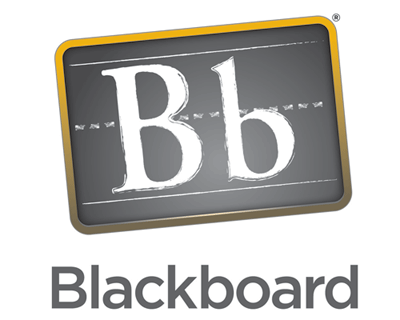
Let me put this plainly: Blackboard is an impediment to scholarship, and the sooner universities stop using it, the better. Let’s leave aside for the moment the clunky UI and bothersome content-framing that makes efficiently using Blackboard materials alongside other web content almost impossible. Let’s just pretend that it’s not a scandalous waste of university resources to pay for a substandard set of collaboration tools when better and more well-supported products exist in the free and open source community. And let’s not worry about the fact that the company behind the software has attempted to patent basic functions like posting course materials and grades online. Even if these issues didn’t exist, the system would still be deeply and fundamentally wrong-headed.
Why do I have such a hate-on for Blackboard? Because Blackboard is a walled garden. Or, put another way, it doesn’t play well with the Web. Which is a pretty serious problem for a product that is supposed to “intertwine easily with the other technologies” learners rely on. Take Blackboard’s RSS support, for example — or, rather, its lack thereof. Getting a feed to display in Blackboard takes a lot more work than it does in, say, a completely free blogging and collaboration system like WordPress. And getting feeds out of Blackboard? Forget about it.
Of course, closed-off, login-required systems like Blackboard are useful for restricting access to private information like grades, internal planning documents and direct email-like communications between professors and students (though why email itself isn’t good enough for this function, I don’t exactly understand). But Blackboard also seals off from public view useful materials like course syllabi, readings, web links and — most importantly — crucial knowledge-production activities like class discussion-board activity and blogs. Hiding this kind of content from public view is destructive and wasteful. I submit that if students and professors are engaging in scholarly discourse in online forums, sharing resources and collaborating on the development of new ideas, it is in the best interest of the students themselves, the Academy at large and — yes — human civilization for this information to be universally accessible, remixable and spreadable. Blackboard works directly against this imperative by locking down the productive activities of the classroom in the name of archaic intellectual property laws and nonsensical bugaboos about privacy, cutting students off from the massive intellectual cross-pollination potential of what James Paul Gee calls “affinity spaces.”
According to Gee, affinity spaces are discursive learning spaces defined not by membership in a particular community or group, but rather by a common endeavor or interest. Enabling these kinds of spaces is arguably the most significant and transformative affordance of the Web. Sure, it’s great that we can link documents together, send information to one another and cheaply produce one-to-many communications. Even walled gardens have their use. But the true power of a global information network is only realized when ideas are linked together and communication begins to occur on a many-to-many scale. This is precisely what happens in an affinity space, which functions as a kind of lens, focusing energy and enthusiasm from a dispersed array of sources onto a particular topic or semantic domain. Knowledge is generated, portals are opened and connections are established. Gee cites AoM Heaven, a player-community resource site for the (now somewhat long-in-the-tooth) RTS game, Age of Mythology, as an example of an affinity space, but it’s easy to think of dozens more. Yelp’s section on Pizza in Los Angeles, the Wikipedia page on micronations, the ThinkWiki Linux Thinkpad users site and the Delicious tag archive for ‘henryjenkins’ are all affinity spaces to a greater or lesser degree. Each is a portal to/generator of content co-created by a distributed group of individuals, expert and novice alike, assembled around a common endeavor.
Blackboard subtracts the efforts of students and professors alike from the pool of sources from which affinity spaces draw their power, interrupting rather than fostering the formation of productive educational bonds. By keeping online discussions, blogs and other discursive engagements under lock and key, Blackboard ensures that no one else on the Web will be able to look at, cite, aggregate, argue with, agree with, blog about or otherwise use any of the content generated or portals opened by the work of the class. This seems like a terrible waste to me — for the students, the professors, and the public at large.
Put another way, affinity spaces know few boundaries and take all comers, and that’s a big part of why they work and how they have become so ubiquitous in network learning practices (indeed, I would argue that affinity spaces are in fact synonymous with network learning practices); Blackboard, on the other hand, reifies an older order of property, unitary authority and isolated community — an order that makes little sense in the context of a broader learning environment governed by sharing, networking and openness.
By eliminating or limiting the role of affinity spaces in classwork, pedagogical approaches that lean heavily on Blackboard not only fail to educate students in crucial digital literacies, but also threaten to alienate them from “traditional” education itself. As administrators consider renewing their expensive contracts with Blackboard, Inc, they would be well-advised to consider the warning that concludes Gee’s paper:
. . . people today are confronted with and enter more and more affinity spaces. They see a different and arguably more powerful vision of learning, affiliation, and identity when they do so. Learning becomes both a personal and unique trajectory through a complex space of opportunities (Le., a person’s own unique movement through various affinity spaces over time) and a social journey as one shares aspects of that trajectory with others (who may be very different from oneself and inhabit otherwise quite different spaces) for a shorter or longer time before moving on. What . . . young people see in school may pale by comparison. It may seem to lack the imagination that infuses the non-school aspects of their lives (Gee 2003). At the very least, they may demand an argument for “Why school?” (103)
However one tries to justify the walled garden, be it proprietary protectionism, safety, careerism or institutional vanity, it’s difficult to claim that this cloistering of discussion, debate and ideation is better for scholarship than its alternative — that is, embracing digital literacy as a crucial pedagogical objective and developing a new praxis for education that brings affinity spaces into the center of the classroom. As for Blackboard itself, perhaps the best we can hope for is that students will find ways to hack it into something better…

Blackboard an unbelievable mess. I wrote this a few years back and it’s only gotten worse since: http://t.co/kujYEChwxi
RT @remotedevice: Blackboard an unbelievable mess. I wrote this a few years back and it’s only gotten worse since: http://t.co/kujYEChwxi